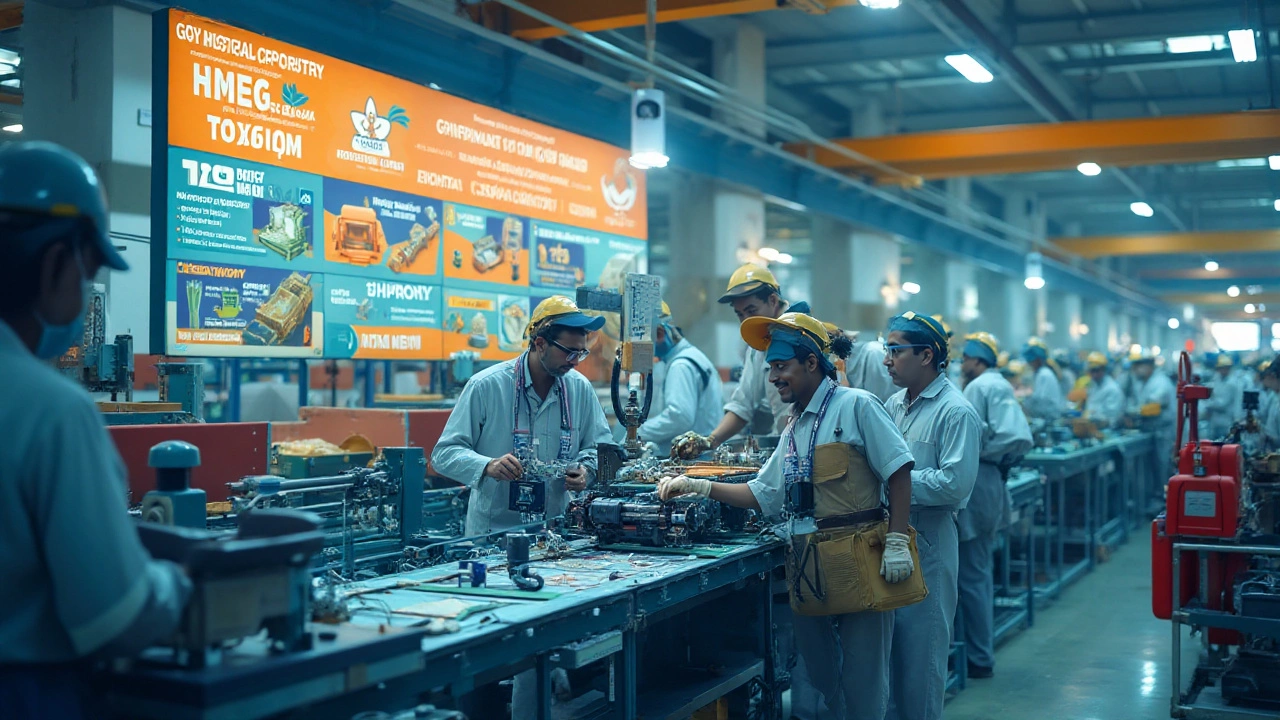Economic Growth and India’s Manufacturing Boom
If you’ve been watching India’s headlines, you’ve probably heard the word economic growth a lot. What most people don’t realize is how closely that growth ties to the country’s manufacturing engine. Factories, machines, and skilled workers are pushing the GDP upward, and the ripple effects touch everything from jobs to exports.
In 2025, India moved up in global rankings for manufacturing output, standing shoulder‑to‑shoulder with China and the United States in several key categories. That jump isn’t magic; it’s the result of policy pushes, technology upgrades, and a wave of new startups looking to fill niche markets.
Key Drivers of Economic Growth
First off, government schemes like “Make in India” gave tax breaks and easier land access to manufacturers. When a company saves on taxes, it can invest in better equipment or hire more people. Those extra hires translate directly into higher household incomes, which in turn boost consumer spending.
Second, the adoption of smart manufacturing tools—sensors, AI, and real‑time data—has cut waste and raised productivity. A plastic converter that once needed ten people can now run with four, while still cranking out more parts. The extra output adds to export numbers, and that lifts the trade balance.
Third, the rise of small‑batch and micro‑manufacturing has opened doors for entrepreneurs. Instead of needing a massive plant, a founder can start in a modest workshop, produce a specialized component, and sell it overseas. Those niche players collectively add a noticeable chunk to the national growth rate.
What This Means for Manufacturers
For anyone already running a plant, the current climate offers both opportunities and challenges. On the upside, demand for high‑margin sectors like pharma, electronics, and specialty chemicals is soaring. Companies that can certify their processes to international standards—think FDA or ISO—command premium prices in export markets.
On the downside, raw material costs can swing quickly. A sudden shift in global oil prices, for instance, can raise the cost of plastic resin. Smart sourcing strategies, such as building relationships with multiple suppliers or locking in long‑term contracts, help cushion those blows.
Another practical tip: focus on sustainability. Buyers in Europe and North America now ask for recycled content and lower carbon footprints. Switching to recycled polymers or optimizing energy use not only wins contracts but also qualifies you for green incentives offered by state governments.
Finally, keep an eye on talent pipelines. Technical colleges across the country are pumping out engineers trained in robotics and data analytics. Partner with a local institute for internships, and you’ll have a ready pool of skilled workers who can help your operation stay ahead of the curve.Bottom line: economic growth in India is no longer a buzzword—it’s a tangible force reshaping factories, jobs, and export markets. By leveraging government support, embracing smart tech, and staying agile on costs and talent, manufacturers can ride this wave and turn growth into lasting profit.

How Manufacturing Fuels National Economic Growth
Manufacturing plays a pivotal role in boosting a country's economic stability by creating jobs, enhancing technological advancements, and stimulating investment. Government schemes often act as catalysts by providing incentives and favorable policies to promote industrial growth. The presence of a robust manufacturing sector can help improve infrastructure and increase exports. This article explores the multifaceted ways manufacturing contributes to a nation's well-being and progress.
Read More